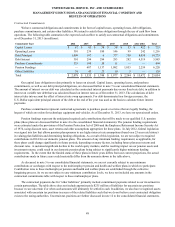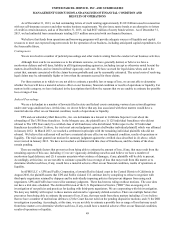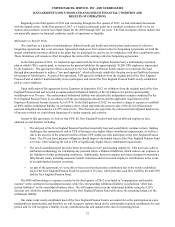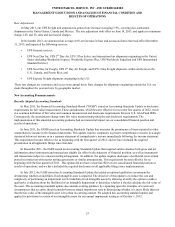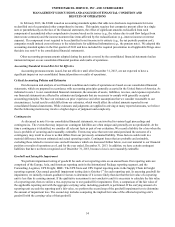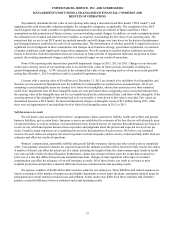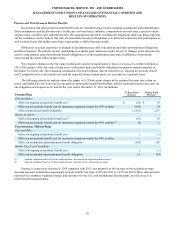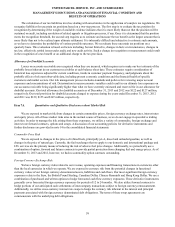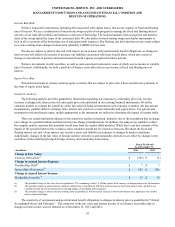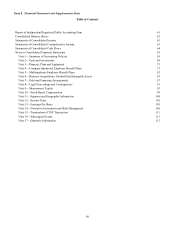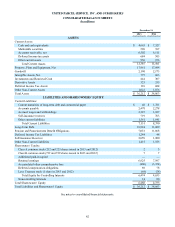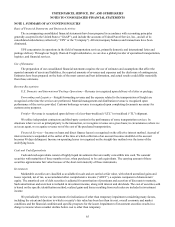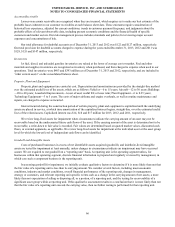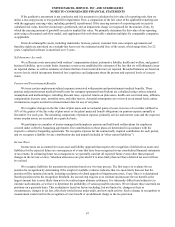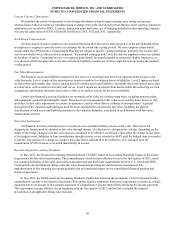UPS 2013 Annual Report Download - page 70
Download and view the complete annual report
Please find page 70 of the 2013 UPS annual report below. You can navigate through the pages in the report by either clicking on the pages listed below, or by using the keyword search tool below to find specific information within the annual report.UNITED PARCEL SERVICE, INC. AND SUBSIDIARIES
MANAGEMENT'S DISCUSSION AND ANALYSIS OF FINANCIAL CONDITION AND
RESULTS OF OPERATIONS
58
The calculation of our tax liabilities involves dealing with uncertainties in the application of complex tax regulations. We
recognize liabilities for uncertain tax positions based on a two-step process. The first step is to evaluate the tax position for
recognition by determining if the weight of available evidence indicates that it is more likely than not that the position will be
sustained on audit, including resolution of related appeals or litigation processes, if any. Once it is determined that the position
meets the recognition threshold, the second step requires us to estimate and measure the tax benefit as the largest amount that is
more likely than not to be realized upon ultimate settlement. It is inherently difficult and subjective to estimate such amounts,
as we have to determine the probability of various possible outcomes. We reevaluate these uncertain tax positions on a
quarterly basis. This evaluation is based on factors including, but not limited to, changes in facts or circumstances, changes in
tax law, effectively settled issues under audit, and new audit activity. Such a change in recognition or measurement could result
in the recognition of a tax benefit or an additional charge to the tax provision.
Allowance for Doubtful Accounts
Losses on accounts receivable are recognized when they are incurred, which requires us to make our best estimate of the
probable losses inherent in our customer receivables at each balance sheet date. These estimates require consideration of
historical loss experience adjusted for current conditions, trends in customer payment frequency, and judgments about the
probable effects of relevant observable data, including present economic conditions and the financial health of specific
customers and market sectors. Our risk management process includes standards and policies for reviewing major account
exposures and concentrations of risk. Deterioration in macroeconomic variables could result in our ultimate loss exposures on
our accounts receivable being significantly higher than what we have currently estimated and reserved for in our allowance for
doubtful accounts. Our total allowance for doubtful accounts as of December 31, 2013 and 2012 was $122 and $127 million,
respectively. Our total provision for doubtful accounts charged to expense during the years ended December 31, 2013, 2012
and 2011 was $129, $155 and $147 million, respectively.
Item 7A. Quantitative and Qualitative Disclosures about Market Risk
We are exposed to market risk from changes in certain commodity prices, foreign currency exchange rates, interest rates
and equity prices. All of these market risks arise in the normal course of business, as we do not engage in speculative trading
activities. In order to manage the risk arising from these exposures, we utilize a variety of commodity, foreign exchange and
interest rate forward contracts, options and swaps. A discussion of our accounting policies for derivative instruments and
further disclosures are provided in note 14 to the consolidated financial statements.
Commodity Price Risk
We are exposed to changes in the prices of refined fuels, principally jet-A, diesel and unleaded gasoline, as well as
changes in the price of natural gas. Currently, the fuel surcharges that we apply to our domestic and international package and
LTL services are the primary means of reducing the risk of adverse fuel price changes. Additionally, we periodically use a
combination of option, forward and futures contracts to provide partial protection from changing fuel and energy prices. As of
December 31, 2013 and 2012, however, we had no commodity option contracts outstanding.
Foreign Currency Exchange Risk
We have foreign currency risks related to our revenue, operating expenses and financing transactions in currencies other
than the local currencies in which we operate. We are exposed to currency risk from the potential changes in functional
currency values of our foreign currency-denominated assets, liabilities and cash flows. Our most significant foreign currency
exposures relate to the Euro, the British Pound Sterling, Canadian Dollar, Chinese Renminbi and Hong Kong Dollar. We use a
combination of purchased and written options to hedge forecasted cash flow currency exposures. These derivative instruments
generally cover forecasted foreign currency exposures for periods of 12 to 24 months. We also utilize forward contracts to
hedge portions of our anticipated cash settlements of intercompany transactions subject to foreign currency remeasurement.
Additionally, we utilize cross-currency interest rate swaps to hedge the currency risk inherent in the interest and principal
payments associated with foreign currency denominated debt obligations. The terms of these swap agreements are
commensurate with the underlying debt obligations.


